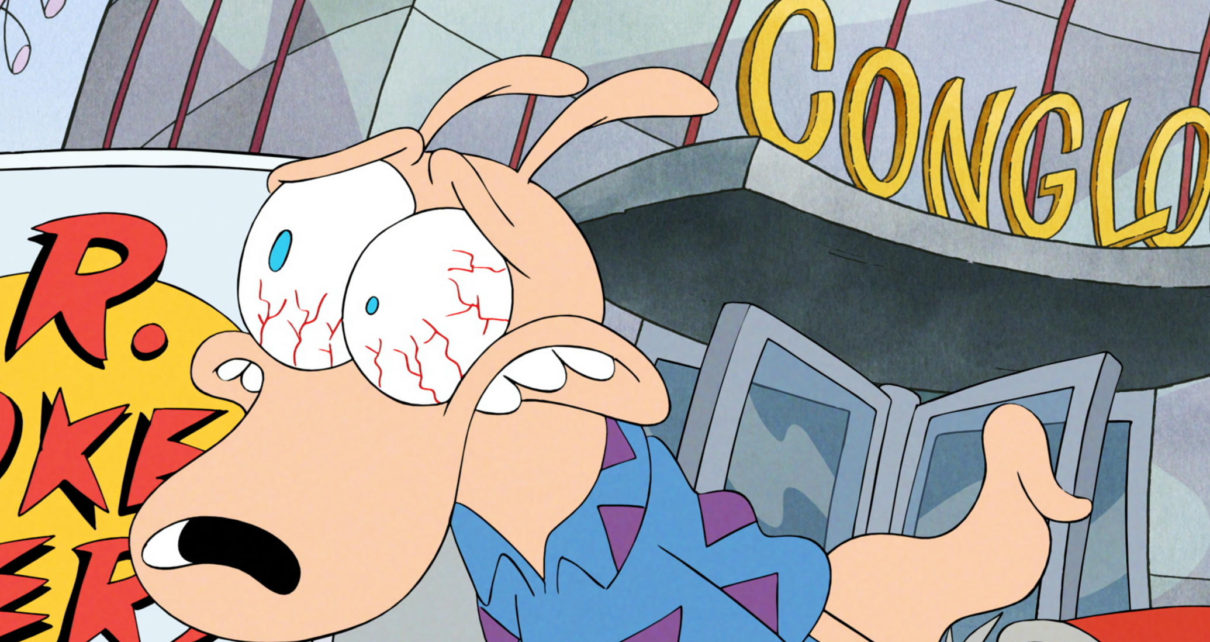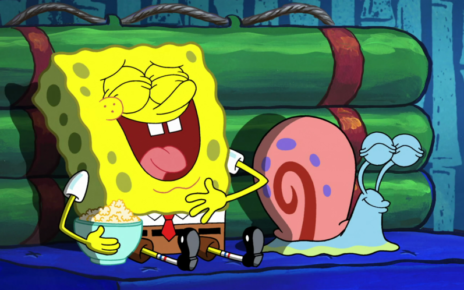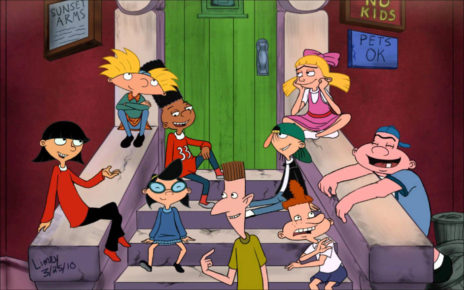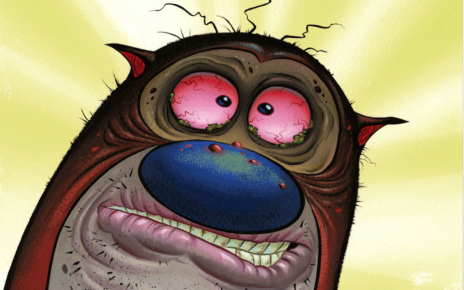This post contains spoilers for Rocko’s Modern Life: Static Cling.
Rocko’s Modern Life: Static Cling is a treasure. This is a topic I cover over the course of probably too many words for our pals at Thrillist, but the new Rocko’s revival is a high-strung funambulist fever dream, perfectly tuned to the “2019” end of its Modern Life dial and full of enough self-referential callbacks to remind us of just how savvy Rocko’s was in the ’90s.
As I revisited episodes of the show on one of my more recent insomnia-driven 3 a.m. cartoon spirals, one of the things that struck me was how canny it was about shredding its own means of production, particularly through the transgender character we would later come to reconnect with as Rachel Bighead in Static Cling.
In her earlier episode appearances before her transition, Rachel was an animation writer working in the throes of the Hollywood machine, alongside other animal spoof characters. In her introductory two-parter episode “I Have No Son!”, our heroes Rocko, Heffer, and Filburt tour the lot of an animation studios, surrounded by gags on the animation process, how toys and other IP shilling funded TV show production, and even a line and meta-animated sequence where an animator quips that the trio are about to walk into the room…as they walk into the room. In her next appearance, the two-parter “Wacky Delly,” Rachel Bighead ditches the animation business outright and later tries to sabotage the show on which Rocko, Filburt, and Heffer work. Rocko’s obviously has its own unique spin on the subject matter, but its excoriating critique of Hollywood and the ways it stifles and corrupts creative energy isn’t far off from the 2010s modern critical darling set in its own fictionalized version of Los Angeles and starring talking animals BoJack Horseman. It’s also worth noting that several animated comedies — Animaniacs, Tiny Toon Adventures, Freakazoid!, and more — aired in the same decade as Rocko’s, leveling their own cartoon criticism at the industry that begat them too.
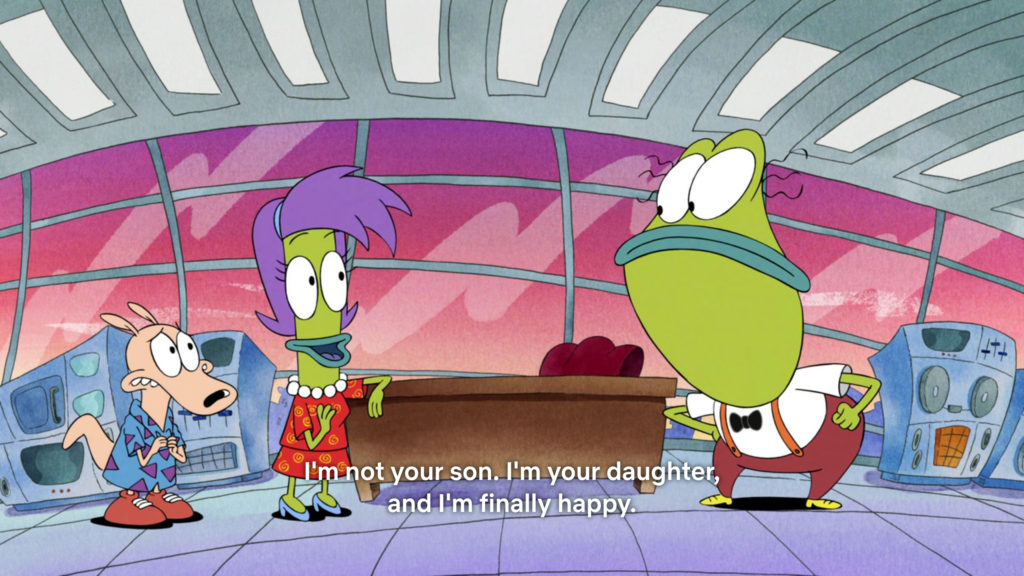
That’s not to say these shows are unoriginal, far from it. Nor were they the first in Hollywood to mock their own industry, as that credit probably goes to the original scribes of Variety, nor do any of them treat their subject matter with the saccharine wash of live-action drivel like The Artist or La La Land. (They also aren’t called “Quentin Tarantino’s Once Upon a Time…in Hollywood“.) But looking back, it’s hard not to appreciate the complete arc that Rocko’s Modern Life deploys in relation to these other shows. BoJack gives us (I suspect) the miserablist epilogue of a life broken by Hollywood, with complexities and a few sympathetic bright spots in between, but mostly the inveighing of a (horse)man torn up by his own self-destructive tendencies. And Tiny Toon Adventures, Animaniacs, and Freakazoid!‘s gags gave us screwball absurdity in the vein of Looney Tunes.
Rocko’s went another way with Rachel Bighead. It gave us a character (voiced by Joe Murray, the creator of Rocko’s Modern Life!) who was set up as a true genius storyteller, and who got to make her exit. Doing so, she also managed to rediscover who she was and find happiness. By comparison, it’s so goddamn hopeful. Rachel Bighead’s central arc affirms the other show’s arguments that a creative industry corrupted by capitalism can break you, but it also affirms the possibility for a happy ending, as well as fulfilling creative work by the end of Static Cling. And in dramatizing a transgender character’s pursuit of happiness within that context, it’s a genuinely historical text within this self-referential tradition of entertainment made about the entertainment industry.
There’s still no story Hollywood loves more than a Hollywood story. But Rocko’s Modern Life and and its revival Static Cling were the rare ones we could all learn from, no matter where we live and work.
Thanks for reading The Dot and Line, where we talk about animation of all kinds. Don’t forget to follow us on Twitter and sign up for our newsletter.


